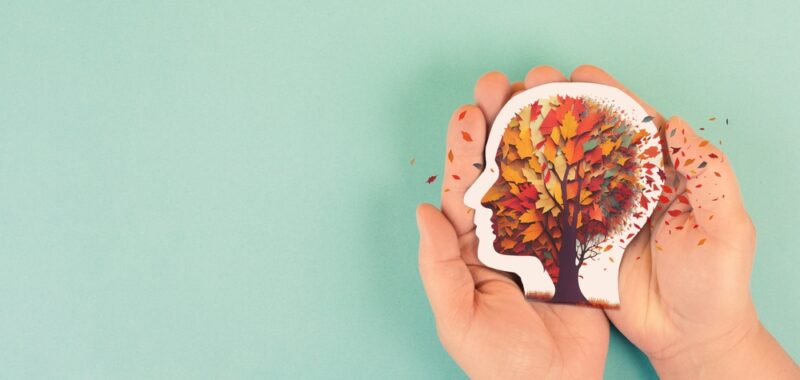It has long been said that Alzheimer’s disease or a related dementia (ADRD), like some other conditions, is a disease of the family. The ramifications of the disease extend well beyond the periphery of the person with cognitive decline to other family members, such as parents, adult children and siblings, and children under 18.
Yet, the latter, the most vulnerable, are often left in the dark.
Whether young children are living with or visiting a person with ADRD, a loved one’s memory loss and changes in personality and behavior can be unsettling, frightening, and worrisome. Children may experience anger and grief. They may withdraw, missing out on interactions that could be meaningful to both generations.
A recent social media post by the Alzheimer’s Society captures the experience. In a school assignment, 13-year-old Rosie wrote about her grandmother with dementia. “As her conditions worsened, me and my younger sister saw our grandma in states no child should see,” she said. “If I had to describe it, I would say it’s like mourning someone [who is] still here.”
Watching the decline of a grandparent, for example, is hard enough, but it can be even harder when young children are faced with a parent diagnosed with younger-onset ADRD, occurring under age 65. For them, researchers report “disruption in many aspects of their lives,” including familial and social relationships and financial stability. Despite this, the youngsters “demonstrate remarkable resilience and self-awareness.”
In addition, consider the challenges and complexities for those children and teens who transform into caregiving youth; in the U.S., 5.4 million youth take on this role, caring for family members with various diseases, including ADRD. The emotional and practical toll, poorer mental and physical health, and academic repercussions can be enormous. On the flip side, caregiving youth may emerge from the experience with greater empathy and strength. Both negative and positive effects can be long-lasting and life-changing.
As a result, many researchers and advocates have called out the medical community, educators, researchers, government and social service agencies, the public, and others for not recognizing caregiving youth. And they are calling for change.
In particular, pediatric providers “are uniquely positioned to identify and support caregiving youth,” said the authors of an article in Pediatrics, the Journal of the American Academy of Pediatrics. A recent article in The Lancet even suggests that “governments could mandate the requirement for health professionals supporting adults with long-term health and support needs to ask whether there are any young people who are providing care and make appropriate referrals for support.”
Whether in doctors’ offices or at home, the consensus is that truthfulness about a loved one’s ADRD is vital for children of any age, from preschool to teen. Rather than protecting them from what is happening, informing and involving them appropriately can help lessen fear and other negative emotions. So, let’s open these discussions.
As an example, I wrote my recently published children’s book, Come Grandpa Meow, Let’s Fly: A Heartfelt Children’s Story About Alzheimer’s Disease Plus a Guide to Intergenerational Activities, to help family members or other care providers speak with children about Alzheimer’s, chip away at the fear surrounding it, and promote relationship building between the generations.
The two-part book consists of a story about the changing relationship of a young girl and her grandpa with Alzheimer’s and a collection of intergenerational activities to connect young children or others and individuals with ADRD. The book’s opening letter explains the value of each section.
“In engaging in these activities, it’s important to recognize that half of the duet is an adult, the other half is a child, and each should be treated with appropriate communication and activities matching their cognitive and physical abilities.
“For a child, such interactions can help reinforce understanding of the disease, nurture kindness, and offer lasting memories. For a person with Alzheimer’s, this engagement can evoke joy, utilize a person’s remaining strengths, and improve quality of life. For both, it is a shining ray of hope in what can be an increasingly dark journey.
“Both parts of this book are designed to help children meet in the moment with loved ones or others with Alzheimer’s. These rich moments can be set in motion by family members at home or by professionals at an adult day program, long-term residence, or the like.
“When my two daughters were young and watched their Grandpa Michael decline from Alzheimer’s, some of the most powerful and treasured moments came when the girls sang—and when he unexpectedly whistled a happy tune along with them.
“In the face of this devastating disease, we are all looking for that “moment”—a twinkle of joy, laughter, connection, or remembrance. A glimmer of hope. Meeting in the moment can occur at any time. It can be serendipitous. Or it can be fostered by purposeful activities. However, and whenever it occurs, embrace the moment orchestrated by this beautiful duet.”
The bottom line is that ADRD’s impact on our nation’s youth is wide-ranging, but we can try to mitigate the disease’s harsh reality with candor, education, support, and meeting in the moment.
Carol Steinberg is a journalist and patient advocate.


